Tobacciana
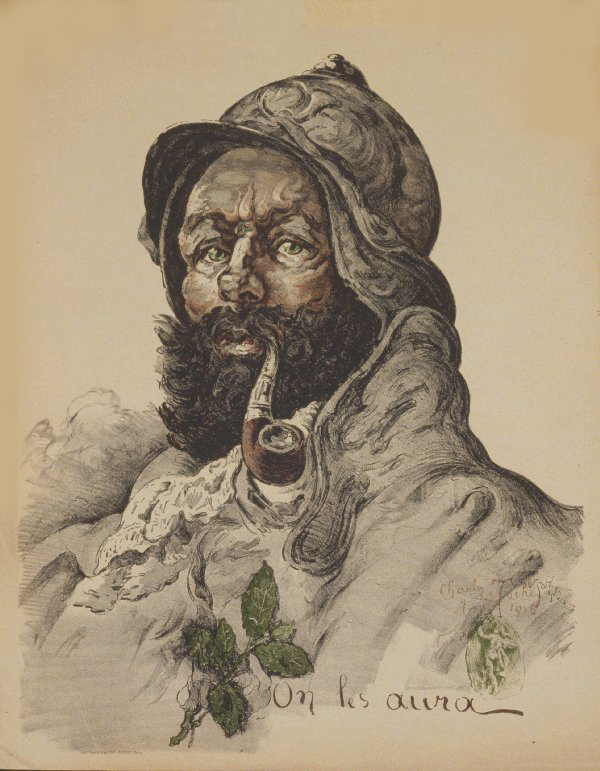
Tobacco use at the time of the Great War was extremely popular in all European male societies, across all classes and professions. Even before the war though, tobacco products were very popular among Frenchmen, be they peasants toiling in the fields, workers laboring in the factories, or civil servants employed in government offices in the cities and towns. The use of smoking and smokeless tobacco was propelled to even greater heights as millions of men entered into military service. For many poilus, smoking was one of the few comforts that could still be enjoyed when so many other of life's basic comforts had been ripped away from him. Smoking became not just a habit but in the minds of many, a necessity. It acted to bond the men together in shared practice and provided a means of hanging on in the most difficult of circumstances. The artilleryman Firmin Bouille summed it up this way: "You musn’t forget that tobacco is the soldier’s one inseparable companion. Smoking, even though it’s a vice, is his only distraction in the front line, and the only remedy he has for the blues. Tobacco and wine are the Terror of the Boche."
Pipes
At the time of the Great War, pipe-smoking still remained the most dominant form of smoking tobacco, even among the young men. While pipes made of briar wood were dominant, pipes made of both white and red clay -- in common use for centuries -- remained popular with soldiers coming from peasant backgrounds at the early stages of the war. The hard life of a soldier on campaign eventually saw the clay pipes largely fall out of use in favor of the more durable wood pipes. Meanwhile, men from Alsace and Lorraine coming from Germanic traditions favored the traditional "wine pipe" (sometimes referred to as a Black Forest or alpine folk pipe). Whatever the preferred form, French soldiers developed a strong attachment to their pipe, la quenaupe, in poilu-speak. One soldier noted: In the 18th century, before a charge was made the time was spent adjusting hats and ribbons to be in order. In the century of the poilus, you prepare yourself for combat by lighting your pipe, and there’s a fine French swagger in the motion of a poilu who, in spite of the shells, absorbs himself in attention of relighting a pipe that has gone out. Marcel Anquetil went as far as to write an ode in the trench newspaper Les Boyaux du 95e entitled "To My Pipe":
May I celebrate you as much as I should,
Oh pipe my companion, oh pipe my love?
In times of stormy weather and calm, you’re there
On the lips of the solider always fixed in place.
In the bottom of the sap, hunkered down and daydreaming,
Where the back leans against the wet trench wall,
The Poilus, like the gods described by ancient authors,
Are endlessly surrounded by your light colored smoke...
Some chose to decorate their pipe by carving inscriptions and images into the bowl as mementos of their service. These ranged in quality from rudimentary scratches made with a pocket knife to elaborate motifs that demonstrate a skilled craftsman's touch. Inscriptions of the soldier's unit or his years of campaign service (e.g. "Campagne de 14-15," "Campagne de 15-16-17") were popular. A soldier could also order a professionally engraved pipe form a catalog.
A final note on a more macabre level, smoking a pipe proved an effective way to mask the horrible odors at the front: human waste, body odor, and more critically the smell of the decomposing dead.
Here are a number of examples of pipes from the period.



Tobacco Ration
In the French army, tobacco was a ration distributed to ranks just like bread or wine (20 grams per day). Soldiers received their rationed tobacco (officially called tobac de cantine) in individual packets called the Gros 'Q' (Big 'Q'). Soldiers deformed this to Gros Cul ("Fat Ass"), as 'Q' and 'Cul' are homophones and shared the same pronunciation in French. Simple in fabrication, it consisted of a cube of brown or neutral colored wax paper wrapper with a ribbon label affixed along the center. It was produced in two sizes: 40 or 100 grams. The 40 gm cubes were theoretically to be distributed every two days while the the 100 gm cubes were to be distributed every five days. A soldier could buy additional tobacco (hence, the price on the label). On a side note, there is some debate around the correct size of the smaller Gros ‘Q’ packet during the Great War. Some sources indicate that the military issue packet was 50 gm, while the packet available for on the civilian market for purchase was 40 gm. There is also the argument that any packets bearing the inscription "Régie françaises des tabacs" on the label are post-war. While these factors are up for debate, one tell-tale sign that a packet was produced between 1914 and 1918 is the price of the packet itself. The Great War era 40 gm packets are marked at 7 centimes per packet and 1.50 Francs per kilogram, while the 100 gm packets (15 centimes a packet or 1.50 Francs per kilo) were made only during the Great War.
French army regulation tobacco, referred to informally by the soldiers as perlot, was of universally of poor quality and badly processed. As pipe-smoking still remained the most dominant type of tobacco use, rationed tobacco came in the form of pipe tobacco, specifically air-cured "dark tobacco" (tabac brun). Light (i.e. blond) tobacco, typified by the Virginia leaf, only appeared with the arrival of the Americans (and was generally in cigarette form). For reference, dark tobacco is traditionally used for cigars, pipes, chew and snuff, and is characterized by its strong, full flavor. The type of cut was referred to as the "Scaferlati" type in reference to its rough-hewn quality. Indeed, soldiers' accounts refer to the prevalence of plants stems in the mix. All military rationed tobacco was labeled: "Scaferlati pour les troupes and "Armée" perpendicularly on the ribbon label. Packets of Scaferlati were available for purchase on the civilian market but labeled "scaferlati ordinaire," typically at a higher price.
For instructions on how to make your own Gros Q cube, see the Do It Yourself page.
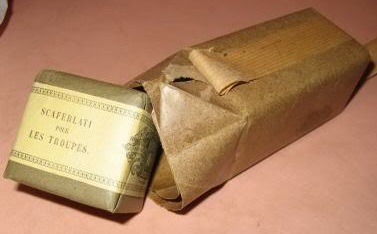

Rolling Papers
For the average soldier, most cigarettes were what are today referred to as "rollies" -- cigarettes that were hand-rolled using rolling papers designed for the purpose. With the distribution of the Gros 'Q' tobacco ration, the French army also issued rolling papers. The Alésia book was the most common regulation packet issued in the army. Packets could also be purchased, including the famous Zig-Zag brand. Interestingly, the image of the smoking zouave that adorns the cover has changed little over the years, and the white Zig-Zag papers still produced today are nearly identical to those of the Great War era. The following are examples of rolling paper packets:
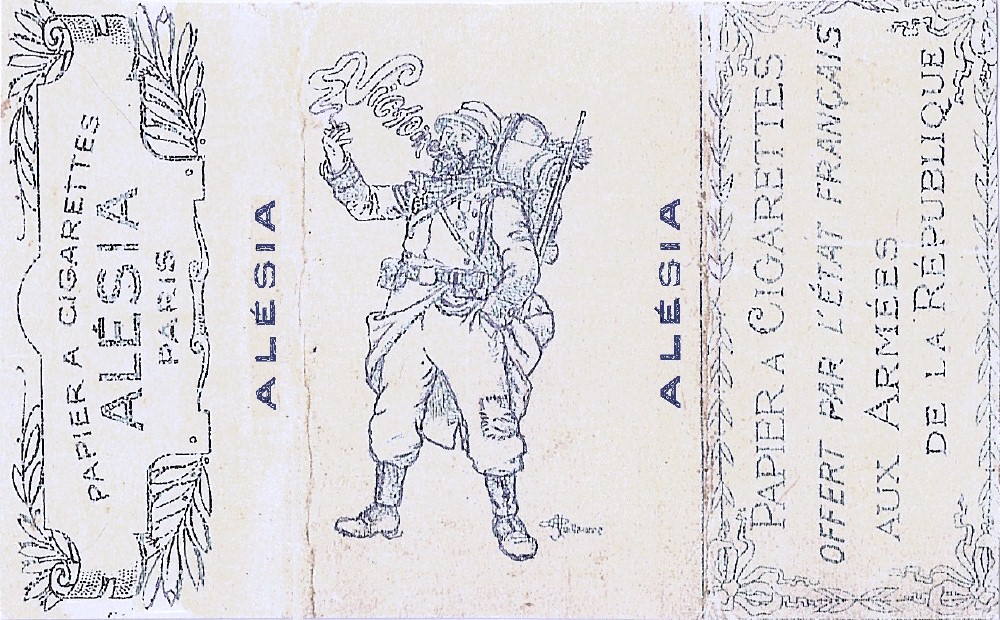


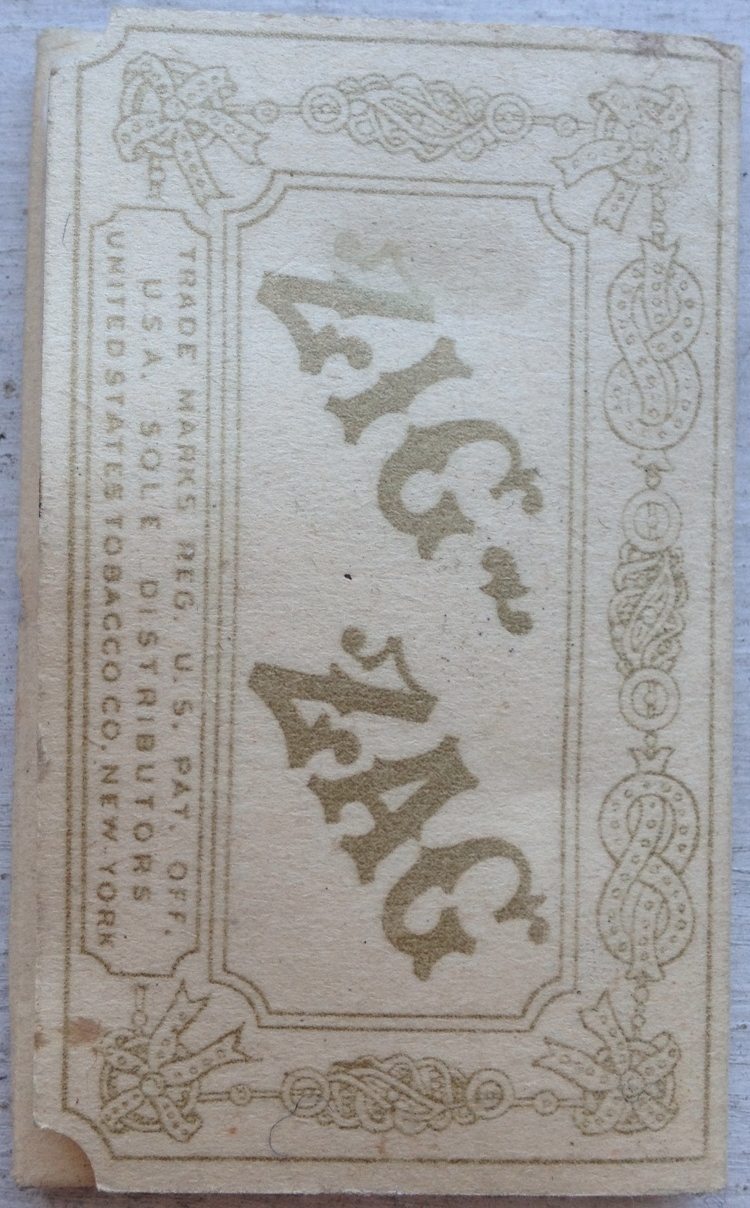
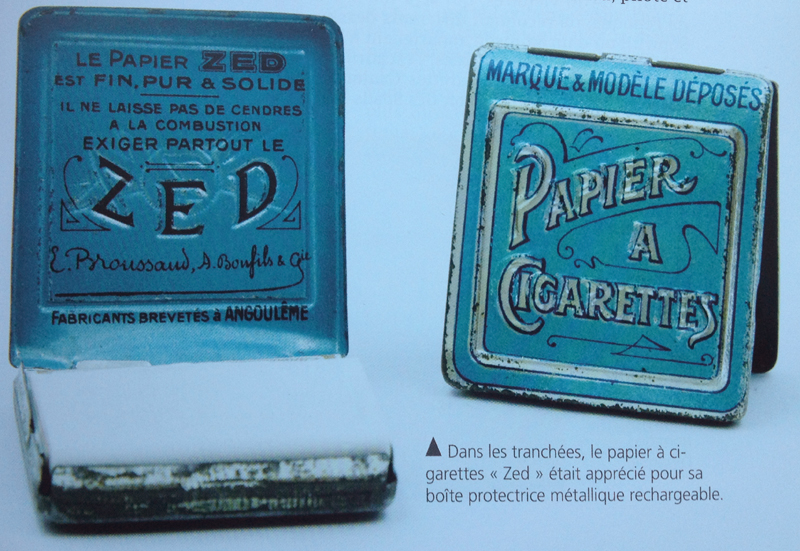
Cigarettes
Rolled cigarettes were not rationed out in the French army. The rationed tobacco was made primarily with the intention for use in a pipe, although rolling papers were distributed for those inclined to smoke their tobacco as a cigarette. At the time, cigarettes were still a relatively new product to many Frenchmen, especially those hailing from rural areas, as their use was associated more with urban populations. Cibiches ("fags"), as cigarettes were commonly known in poilu slang, gained increasing popularity during the war, especially among the younger classes of recruits who viewed it as more fashionable. Rolled cigarettes were available for purchase at the military-run bazaars and co-operatives, or from civilian shops. Nicer quality tobacco, referred to as caporal or more simply fin ("fine"), could likewise be purchased at these locations. Two brands of cigarettes that are still available today were Gitanes and the old blue Gauloise, both of which were made with the same harsh dark tobacco that was used in the ration tobacco but in shag cut. As noted above, at the time of the Great War, light (i.e. blond) tobacco typified by the Virginia leaf only appeared with the arrival of the Americans (and was generally in cigarette form) in 1917. American cigarettes quickly became the preferred cigarette among French soldiers eager to get their hands on the smoother, lighter taste.
On the left is scan of the front label of a pack of cigarettes produced and sold for servicemen. On the right are trench art made cigarette cases.

Snuff
Snuff tobacco continued to be enjoyed among portions of French society at the time of the Great War. Snuff was particularly popular among men whose professions made it impractical or impossible to smoke or to be seen smoking, such as doctors, lawyers, professors, clerks, clergymen, and miners. With the invention of the automatic cigarette rolling machine and the rise in popularity of cigarettes during the nineteen teens and twenties, snuff use declined dramatically, as soldiers returning from the war made smoking cigarettes the most fashionable form of tobacco use. Evidence of snuff use in the French army during the war can be found in the proliferation of snuff boxes and bottles either purchased or hand-crafted by the troops. These were normally made of pewter, tin, terracotta, or wood.
Matches and Safeboxes
Matches were distributed to the troops (50 matches for every 15 days) as part of their tobacco ration. They could also be purchased by the troops in shops, or at military canteens or co-operatives. Strike anywheres were popular due to their convenience. Many men either purchased or hand-crafted their own safeboxes out of wood, aluminum, tin, or brass to protect the matches from moisture. The following are a few examples of safe boxes, as well as an example of a matchbox cover.

Trench Lighters
Lighters were perhaps the most popular category of trench art at the front and rear alike. There superabundance in auctions even today is a testament to this. Though commercially manufactured "trench lighters" were sold by enterprising, the vast majority were hand-crafted by the soldiers themselves. The artists were often skilled craftsmen who set up impromptu, barebones shops in the support lines, sometimes in the trenches themselves. Though the existence of cruder forms of lighters indicates an inexperienced hand. Most trench lighters were made from brass cartridge or shell cases stamped into a cylindrical form and when completed with the usual conical cap, resembled mini-munitions on their own right. These were normally adorned with simple patterns and decorations ranging from simple patterns to intricate motifs, according to the skill of the hand or the preference of the craftsman. Some lighters consisted simply of a barely modified cartridge case with a striker mounted on the side. Disc shaped lighters usually in brass or aluminum were also common, the flat surfaces adorned with carvings or coins soldered into place. Some had the pre-stamped designs affixed to them. One example featured, on one side, a poilu peering through a keyhole in a door and on the other side, presumably the same soldier tightly embracing a naked woman. Another type of lighter used specifically for lighting cigarettes was the briquet à amadou (tender lighter), also known as a fusée (fuse) lighter. The design employed a flint and striker mechanism attached to a length of woolen cord. When struck, sparks from the flint ignited the fibers of the cord and the cigarette lit by the smoldering ember.
Examples of a tender lighter and various trench lighters are shown below:
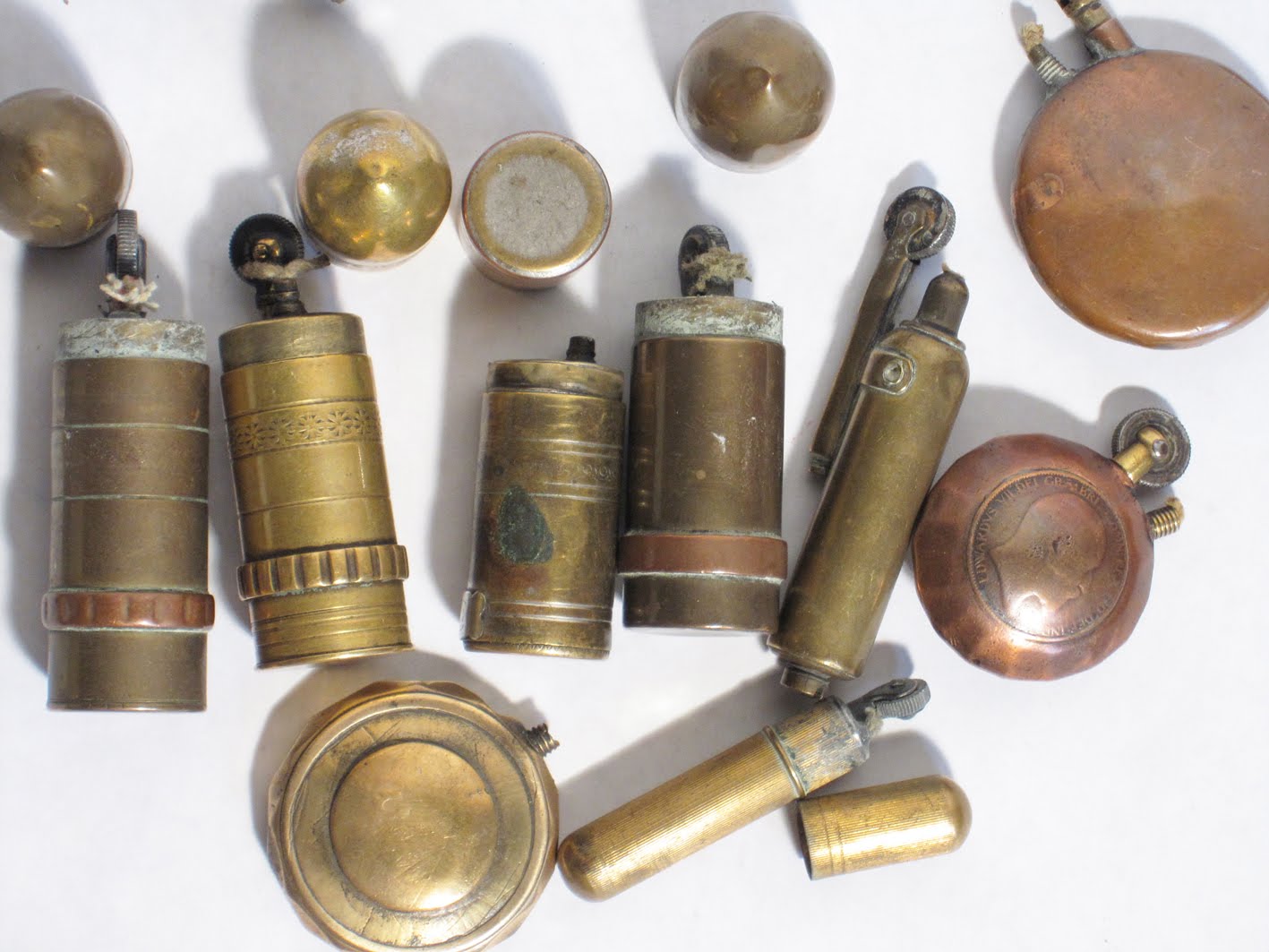



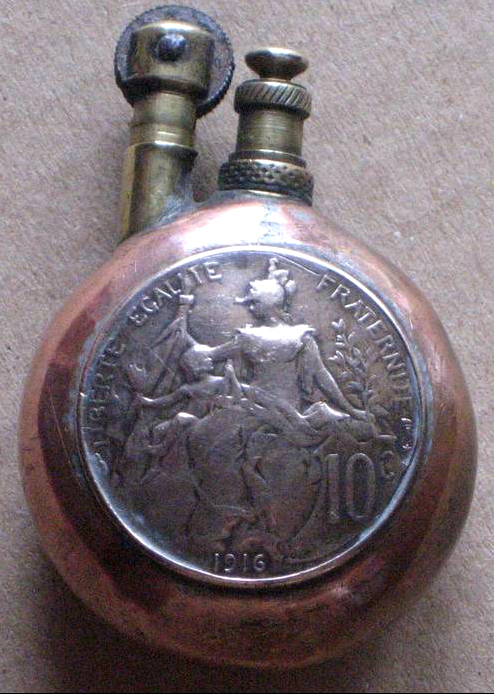
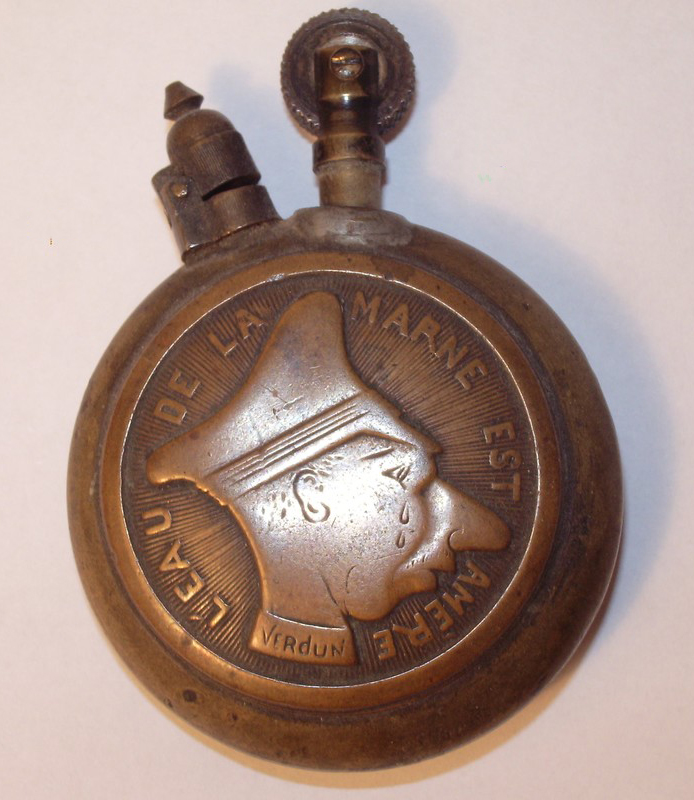
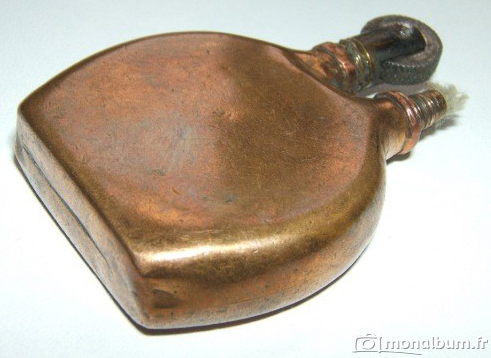
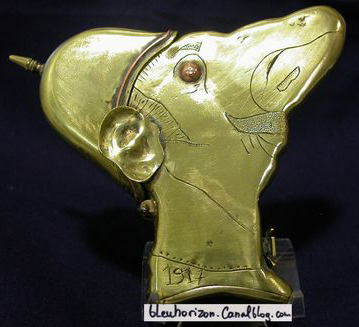




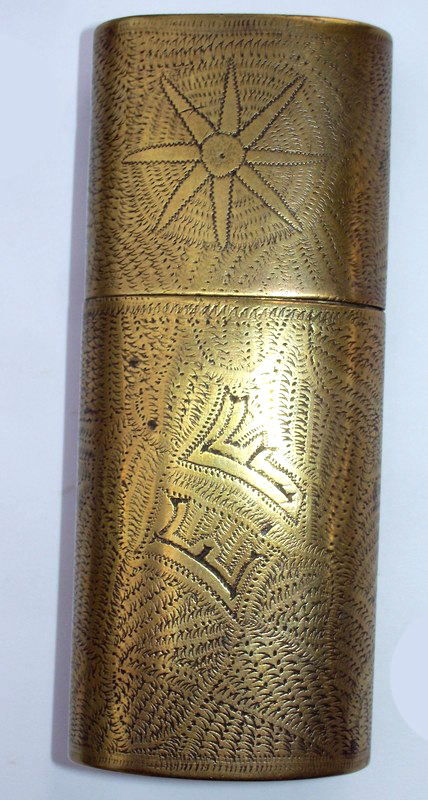

Tobacco Containers
With the prevalence of tobacco use, there were an innumerable variety of containers to hold the tobacco and protect it from moisture. These could either be purchased commercially or fashioned by hand from any number of materials. Hand-crafted containers generally fall under the category of trench art. Wood, bone, nickle, aluminum, tin, brass, copper or a combination of these materials. While tobacco was often sold in decorative tins, they could also be bought separately. While the less fastidious among them might rely on a small poke bag or even an old sock to hold their tobacco, many preferred to store it in the waterproof pouch intended for the gas pad. More traditionally, tobacco pouches made of leather or an impermeable canvas cloth could be acquired. Grease and shoe polish tins were reused as tobacco holders too. Later, the gas-mask can would serve the same purpose, while still others chose to repurpose German cartridge pouches taken from a prisoner or picked off the battlefield.
The following are some examples of tobacco containers:



